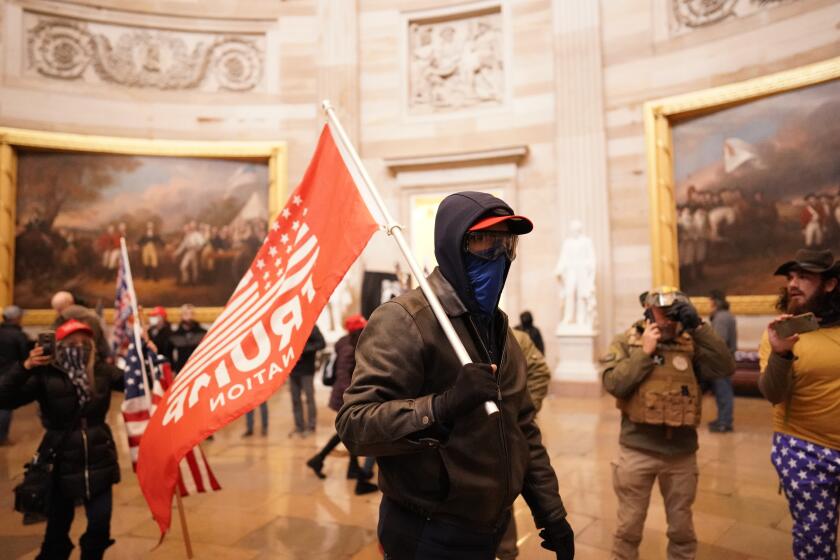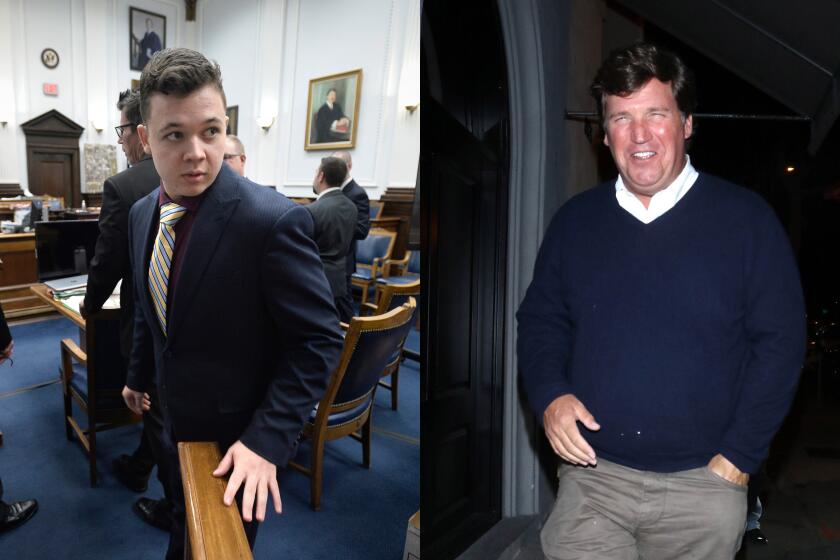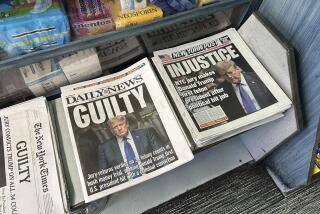The crisis of democracy is a media crisis. And the mainstream press is losing

This time last year, there was a cruel joke in circulation: The most spiteful year in recent memory would reset itself at midnight on Dec. 31, and we’d be forced to relive 2020 from the beginning.
Funny, right? Not really. But we could tell the joke then because we finally had some hope. The worst 12 months ever were behind us, with their burnt offerings of deadly pandemic, political race-baiting, violent uprisings, QAnon absurdity and toilet paper hoarders. We had a new president-elect, access to life-saving vaccines, a peaceful election and a rebounding Charmin supply.
Little did we know that 2021 would be hellbent on stealing the apocalyptic crown from 2020. Its opening number? A deadly attempted coup at the U.S. Capitol building and the rise of the Delta variant. Its closing salvo? Omicron and congressional hearings that have revealed that the calls to overturn the election results were indeed coming from inside the House.
The long-haul chaos culminated in 2021, exhausting traditional newsgathering organizations while energizing the far-right media. Fox News, social media juggernaut Facebook and a constellation of hard-right outlets reveled in the fear of uncertain times, sowing doubt among their followers about the election outcome, vaccinations and the alarming wokeness of “Sesame Street.” Toxic entertainment for toxic times, still in demand, even after their showy champion lost the White House. The comparatively traditional news media — Beltway reporters, network nightly news, morning shows, Sunday programs — showed up to this poison-tipped knife fight with plastic sporks.
Americans are used to saying, ‘It can’t happen here.’ On Wednesday, it did — and the democracy we crow about exporting abroad was shaken to its foundations.
To be fair, the D.C. press was already depleted, thanks to covering a new fresh hell every hour since 2016. Disproving disinformation (i.e., doing their job) made them targets of a president and a press arm that advocated violence. Who can blame them for breathing a sigh of relief when Joe Biden’s presidential win promised them a respite of politics as usual. So as they reverted to politics-as-sportsball storylines — What will Sen. Joe Manchin (D-W.Va.) demand next? What’s going on with Vice President Kamala Harris’ staff? — the ongoing attack against our democracy became the new, uncovered war in America media. Now, we no longer have to wonder what happens when one player of a two-party system devolves into extremism and takes a significant chunk of the media with it.
“Meet the Press” host Chuck Todd, ABC’s “World News Tonight” anchor David Muir, CNN+ newcomer Chris Wallace and other respected TV reporters and commentators who forged their careers in the Before Times continue to play by the rules of good journalism: Stick to the facts, remain impartial, present differing viewpoints. They may not have come of age in the heyday of Federal Communications Commission fairness rules, when networks licensed by the government were viewed as public trustees, but they certainly have been influenced by it.
The problem is that “both-sides journalism,” as it’s come to be called, has outlived the “fairness doctrine” that created it, which was abolished in 1987 under then-President Reagan. The careful, equitable reporting of “PBS NewsHour” and NPR remains a valuable public service, but in this age of extremes, the point-counterpoint structure is sorely out of step with the bombast of politicians like U.S. Rep. Marjorie Taylor Greene (R-Ga.) and the fact-bending screeds of hangers-on like Rudy Giuliani.
Getting to the bottom of anything requires it having an actual bottom, and that’s an issue in a parallel news universe where lifesaver Dr. Anthony Fauci is a demon, climate change is a hoax and ingesting horse dewormer is safer than a Pfizer shot in the arm. How does one logically debate the politicization of COVID-19 in a traditional talk-show forum without giving a platform to the very folks who’ve spun these deadly lies?
It’s not a problem for those leading the charge. Take Fox News host Tucker Carlson. He’s behind a three-part series that promotes unfounded and disproved conspiracy theories about the Jan. 6 siege. Make-believe narratives. Presented as fact. On an ostensibly “mainstream” network, watched by millions.
Acquitted at trial last week after killing two unarmed men at a Black Lives Matter protest, Rittenhouse visited Carlson’s Fox News show on Monday.
In his adoring interview with “nice kid” Kyle Rittenhouse — the teen who brought an AR-15 rifle to a Black Lives Matter protest and who was charged with killing two unarmed men and maiming another — Carlson assured viewers that Rittenhouse was a patriot, not a racist. He never mentioned a widely circulated photo of the “sweet kid” in a bar flashing white-power signs with Proud Boy members, wearing a “free as f—” T-shirt. And in that siloed universe, no one was there to challenge him. The teen’s acquittal emboldened would-be vigilantes and mass shooters. Social media helped reach them. Rep. Madison Cawthorn (R.-N.C.) took to Instagram Live to rally his followers: “Be armed, be dangerous, and be moral.”
The asymmetrical nature of the media is both a byproduct of and a fuel for the asymmetrical nature of modern partisanship: While Todd is interviewing Fauci, director of the National Institute of Allergy and Infectious Diseases, about practical ways of surviving the pandemic, Fox Nation host Lara Logan is comparing Biden’s chief medical adviser to Nazi war criminal Dr. Josef Mengele.
In these circumstances, even newsrooms not in thrall to the hard-right cabal would be hard-pressed to strike the right tone, to see the big picture, to earn the consumer’s trust. But as social media’s dominance deepens and right-wing platforms grow, mainstream media are in crisis: CNN’s Chris Cuomo was fired after advising brother Andrew Cuomo on his sexual-assault-scandal damage control — exactly the kind of ethical breach that diminishes trust in journalism — and local newspapers are in a fight for survival against venture capitalists.
After an overwhelming year, in a challenging-in-the-best-of-times business, it might seem harsh to blame the old-school press for not assembling the pieces of the puzzle into a warning siren for our system of government. But it isn’t enough to hope that 2022 will magically offer solutions to either our media crisis or our democratic one. It will require swift and forceful change. Otherwise, the joke’s on us.
More to Read
The complete guide to home viewing
Get Screen Gab for everything about the TV shows and streaming movies everyone’s talking about.
You may occasionally receive promotional content from the Los Angeles Times.









